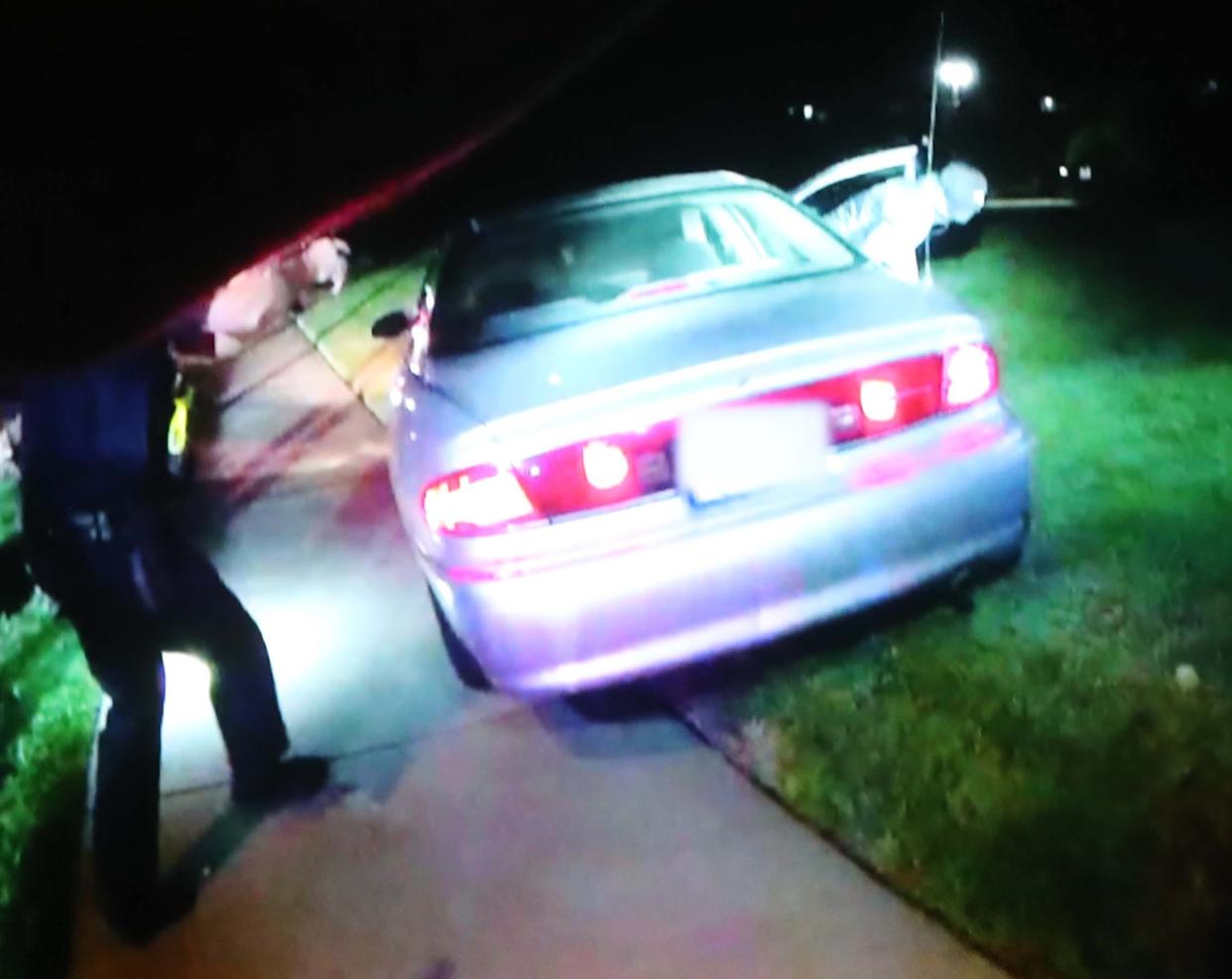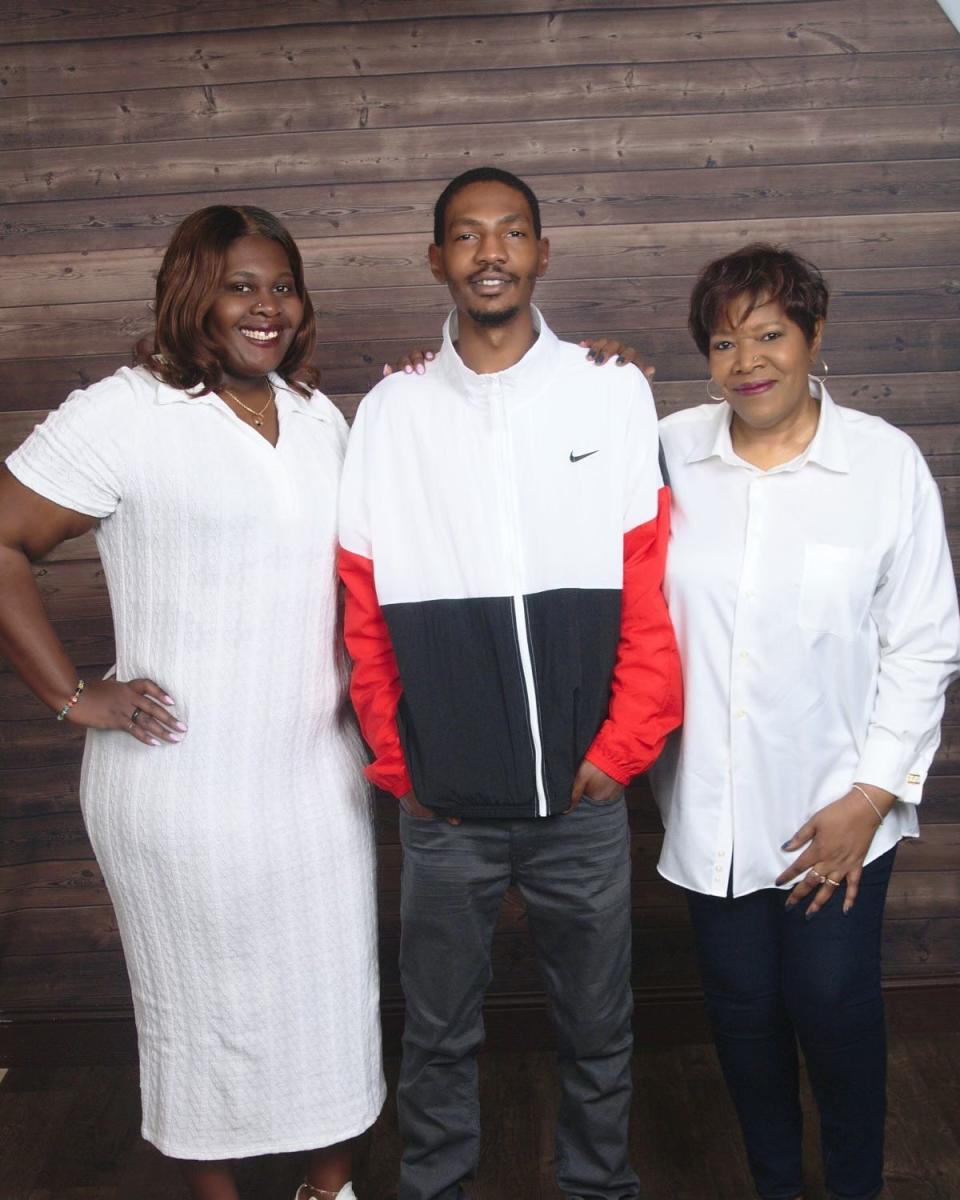AG Dave Yost says charges in Jayland Walker case may not be decided until April or later

- Oops!Something went wrong.Please try again later.
It could be early April before state prosecutors present the case of the eight Akron officers who killed Jayland Walker to a grand jury in Summit County, the state’s top law officer told the Beacon Journal Wednesday.
Ohio Attorney General Dave Yost, who oversees the Ohio Bureau of Criminal Investigation, acknowledged that the "massive case" is more complex and taking longer than usual.
Walker was shot 46 times on June 27 after leading officers on a crosstown car chase, during which police say the 25-year-old man fired a single shot from his car. Walker was unarmed and running in a ski mask when shot by the eight officers after a short foot chase near Wilbeth and South Main.
Jayland Walker: What we still don't know 6 months after Akron police shooting
The Beacon Journal, through public records requests, has reviewed 12 hours of police footage in the case from nearly 40 officers' body cameras, including the officers who fired or responded to the scene. BCI is not only reviewing this footage and more, investigators are painstakingly stitching it all together to analyze singular moments simultaneously from multiple angles, Yost said.

That’s taking extra time, Yost said. His staff dedicates 400 to 500 hours on average for the typical officer-involved shooting investigation. About 1,100 have been spent, so far, in the Walker case, he said.
Once BCI is done, the case will be handed to special prosecutors. That’s been standard procedure since Summit County Prosecutor Sheri Bevan Walsh decided in 2020 after the murder of George Floyd by Minneapolis police to turn over all officer-involved use-of-force cases to the state.
Yost’s special prosecutors, once they get the investigative file, will build their case and, when they’re ready, take it to a grand jury.
“I’m very well aware that this is a very important and high-profile case here in Akron, so I’ve directed my special prosecutors to do the best they can to expedite this and get it to grand jury,” Yost said. “That being said, we’re not going to do this on the quick. We’re not going to cut corners.”
Pressed on a timeline, Yost said: “If I had to guess, and please don’t hang me out to dry if this turns out to be wrong, maybe beginning of April to go to grand jury.”
After hearing the case, the grand jury could take days or weeks to deliberate before issuing the first public notification in the case: a decision to indict or no bill (meaning not charge) the officers.
Protest cases pending:Dozens of criminal cases still pending against Jayland Walker shooting death protesters
Since 2020, local police chiefs have increasingly turned to BCI to investigate their officers’ use of deadly force. Akron Police Chief Steve Mylett, faced with a third fatal shooting of a suspect in his first year on the job, made the referral to BCI standard practice with the Walker case.
In his first term as attorney general, Yost — a former journalist — also made it standard practice to post all investigative documents of officer-involved shootings after a grand jury decision is released.
Within 24 hours of these decision, dozens of electronic files — photographs, evidence inventories, witness interviews, toxicology and lab reports, a radio log and more — are released online. That's when the Akron community will see the sworn statements of officers and other evidence in the Walker shooting.
In-depth: Police rarely face charges when they kill in the line of duty. What are the standards?
If a decision comes in April, the 10 months it would have taken from the date of the killing to the determination of charges would be within the timeframe it has taken to adjudicate other recent cases.
There have been five officer-involved shootings in Akron since December 2021. The first two, in which Akron officers shot and killed James Gross in December 2021 and Lawrence LeJames Rodgers in February, were investigated by Akron police with BCI assisting with the collection and analysis of crime scene evidence. Nine months after his death, a grand jury declined to charge the Akron officer who delivered the fatal shot to Gross as he held a knife to his estranged wife’s throat.
The Rodgers case is still pending although Akron police have submitted their investigation to the Attorney General, Capt. Dave Laughlin said.
BCI is still investigating the remaining three cases, including the killing of Walker and the non-fatal shooting of a woman charged with murder at a bar in North Hill and a reportedly armed teenager shot in the hand by an officer.
Reach reporter Doug Livingston at dlivingston@thebeaconjournal.com or 330-996-3792.
This article originally appeared on Akron Beacon Journal: Jayland Walker case could reach grand jury in April, AG Yost says
